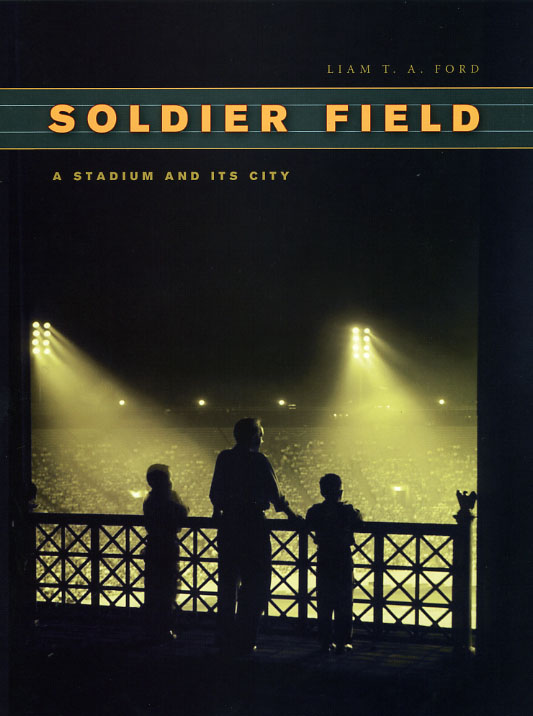Soldier Field and its city
 On Wednesday, the U.S .observed Veterans Day, honoring the men and women who have fought for our country. On Thursday, Liam Ford stopped by the WGN studios to discuss a Chicago monument that serves as a memorial to American soldiers who have perished in war.
On Wednesday, the U.S .observed Veterans Day, honoring the men and women who have fought for our country. On Thursday, Liam Ford stopped by the WGN studios to discuss a Chicago monument that serves as a memorial to American soldiers who have perished in war.
Soldier Field, as sports fans nationwide know, is the home of the Chicago Bears. For decades its signature columns provided an iconic backdrop for gridiron matches. But few realize that the stadium has been much more than that. Ford’s book Soldier Field: A Stadium and Its City explores how this amphitheater evolved from a public war memorial into a majestic arena that helped define Chicago.
Chicago Tribune staff writer Ford led the reporting on the stadium’s controversial 2003 renovation—and simultaneously found himself unearthing a dramatic history. As he tells it, the tale of Soldier Field truly is the story of Chicago, filled with political intrigue and civic pride. Designed by Holabird and Roche, Soldier Field arose through a serendipitous combination of local tax dollars, City Beautiful boosterism, and the machinations of Mayor “Big Bill” Thompson. The result was a stadium that stood at the center of Chicago’s political, cultural, and sporting life for nearly sixty years before the arrival of Walter Payton and William “The Refrigerator” Perry.
Ford describes it all in the voice of a seasoned reporter: the high school football games, track and field contests, rodeos, and even NASCAR races. Photographs, including many from the Chicago Park District’s own collections, capture these remarkable scenes: the swelling crowds at ethnic festivals, Catholic masses, and political rallies. Few remember that Soldier Field hosted Billy Graham and Martin Luther King Jr., Judy Garland and Johnny Cash—as well as Grateful Dead’s final show. Soldier Field captures this history in the making and will captivate armchair historians and sports fans alike.
Check out his interview with Allison Payne below!